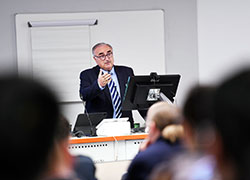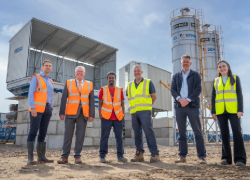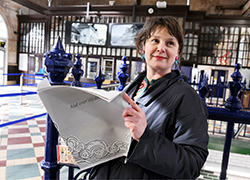No fireworks at Matthew’s graduation
Could particles generated during a firework display be similar to those found in gunshot residue?
If so, could this possibly contaminate evidence found at crime scenes and jeopardize the outcome of an investigation? This forensic feature was explored by the research of Matthew Grima. Matthew, 26, from Malta, has achieved an MRes (Master of Research) in Science degree from the University today and he has already achieved a first class BSc (Hons) Applied Science and Forensic Investigation degree at Teesside. National Maltese television Earlier this year he co-authored research which was published in the journal Science and Justice, the industry text for the Forensic Science Society. Matthew also appeared on the national Maltese television station TVM’s main news to discuss the findings. He first started to compare gunshot residue (GSR) with firework particles when researching a University essay two years ago. Matthew aimed to compare the characteristics of GSR with firework residue particles. He said, 'For a period, GSR was said to be unique. But if the characteristics of firework residue particles are similar then these could be mistakenly identified as GSR. However, these particles are only a small fraction of the larger population, which is clearly firework-derived.
'This can then contaminate GSR found at a crime scene or on a suspect, for example by police officers or ambulance staff who have attended a firework display on the same night. The expert may exclude this evidence since it contains within it firework chemical markers of exclusion.' Matthew was helped to compile research evidence by a Maltese firework factory in Qrendi, Our Lady of Lourdes. He gathered particles from firework display sites and examined these with a scanning electron microscope.
Matthew said, 'There’s not much awareness around the possible contamination that can occur from firework particles to scenes of crime. My master’s research assessed the persistence of firework particles in order to see if they can remain on the individual’s person until the next morning. 'It could have implications, for example, emergency personnel may need showering facilities if they’ve attended a firework display and a change of clothes before moving to a potential crime scene. It may also mean not using the same vehicle for suspects if it’s been at a firework display site that night. If these procedures are executed, then the evidence can be protected from controllable vulnerability and hence, preserve it to bring the best out of the analysis.'
Matthew is also hoping to publish his MRes research work which revolved around improving anti-contamination procedures at scenes of crime following firework displays. He is now working as a Conservation Scientist with Heritage Malta, a very similar role to a Forensic Scientist, since similar techniques are used to analyse materials belonging to items of historical and archaeological importance. Matthew added, 'I am also continuing personal research in the forensic field with the aim of improving standards and practice.'
More about Graduation 2011
 Teesside University hosts groundbreaking hydrogen conference
Teesside University hosts groundbreaking hydrogen conference University supporting development of new £1m concrete plant
University supporting development of new £1m concrete plant Academic’s artwork on display at Middlesbrough station
Academic’s artwork on display at Middlesbrough station